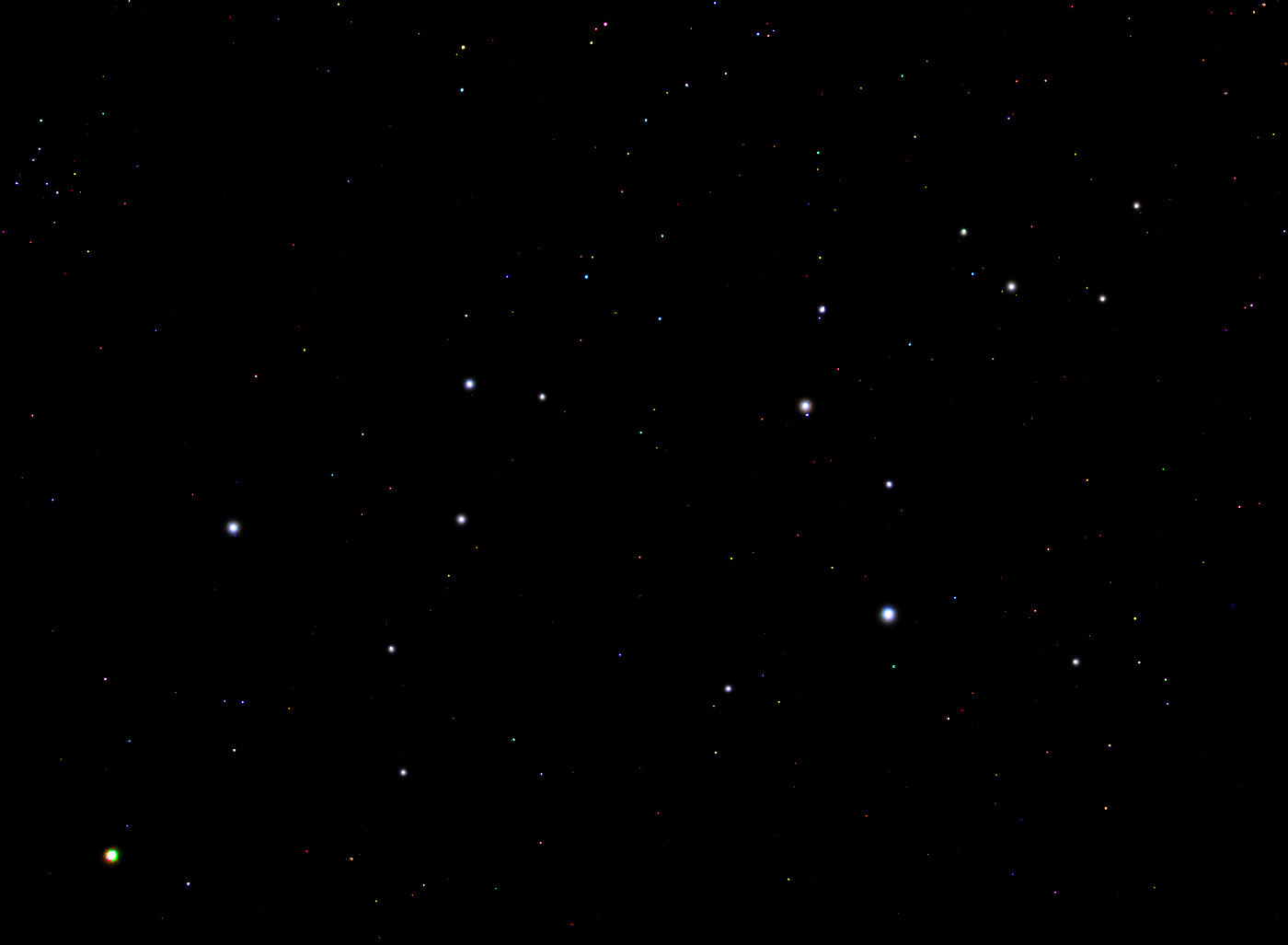Leo
Leo is one of the most recognizable constellations in the sky since it is easily observable as a lion. One of Leo's front feet is the first magnitude star Regulus, a blue-white example about 80 light years away. Regulus is a 4-star system consisting of two doubles. The primary object, Regulus A, is a type B7 main sequence star about 3 1/2 times the mass of our sun, with an absolute magnitude of about -.5, or roughly 150 times the luminosity of Sol. Regulus is a young star, only a few hundred million years old and is spinning very rapidly, rotating once every 16 hours, barely slow enough to avoid losing mass due to centrifugal force. Because of its position in the sky, Regulus is sometimes occulted by a planet. This happened on July 7, 1959, when Venus blocked out the light of this star and it will happen again, also by Venus, on October 1, 2044. The companion to Regulus is probably a white dwarf, but has not been observed directly due to its faintness and its proximity to the much brighter primary. The two stars orbit each other every 40 days. The other pair of stars in this system is almost half a trillion miles distant from Regulus A and both are red dwarfs, the brighter of which is a spectral type K2.
The lion's tail is the star Denebola, an A3 type star about 36 light years from Earth. A mass of about 1.75 times our sun gives this object an absolute magnitude of just less than 2. Denebola is of a similar age to Regulus and also spins very rapidly, giving it a pronounced equatorial bulge.
Leo is best seen from March through May.
 |